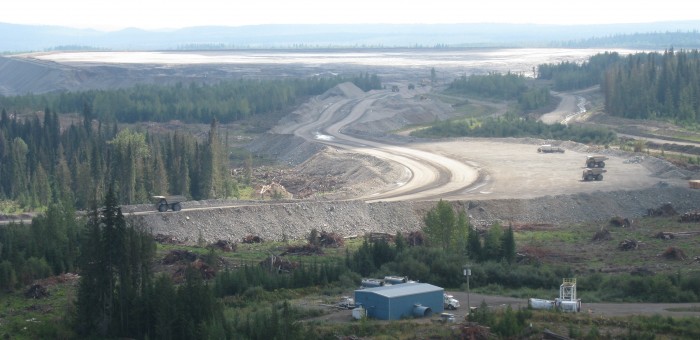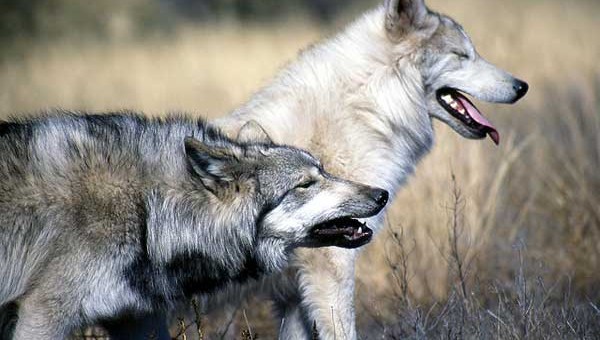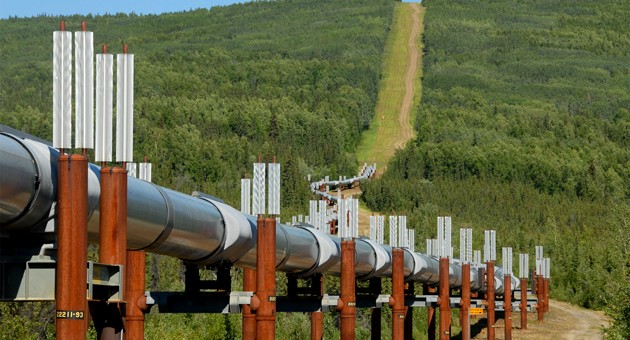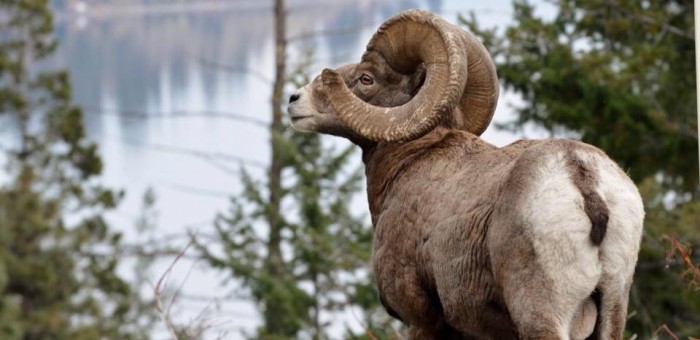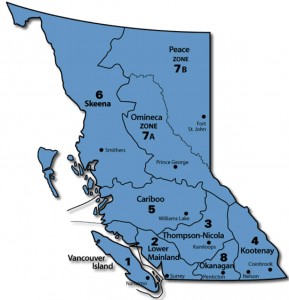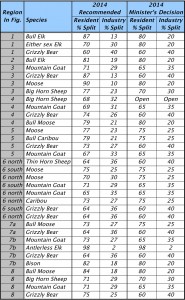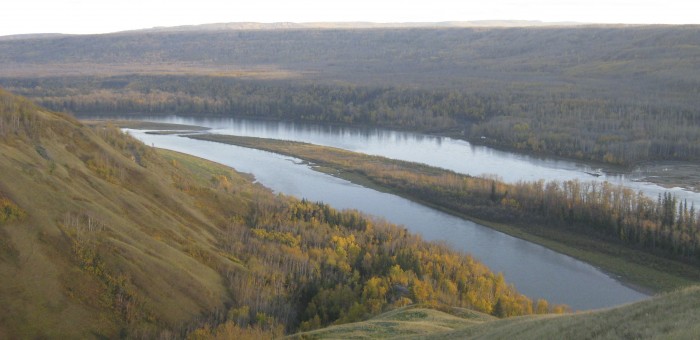Environment
Mount Polley report emphasizes need for paradigm shift in management of mine tailings
Earlier today the BC Government released its long awaited Independent Expert Engineering Investigation Review Panel Report on the Mount Polley Tailings Pond breach. This Panel was empowered to investigate and report on the cause of the failure of the tailings pond facility that occurred on August 4th, 2014 at the Mount Polley Mine. In addition, they were asked to provide recommendations about how such an incident could be avoided in the future.
It’s important to note that while the panel was asked to point to the cause of the breach, it was restricted from assigning guilt or impeding two other ongoing investigations.
In their conclusions, the panel determined that the “dominant contribution” to the failure was the design of the tailings dam. The design failed to take into consideration key geological issues with the foundation. This was referred to by the panel as the “loading of the gun”. What “pulled the trigger”, and ultimately caused the breach, was the construction of a downstream slope at too steep an angle to account for the weakness in the tailings pond’s foundations. Essentially the wall of the tailings pond could not support the load being placed on it, and gave way without any warning.
This report’s contribution goes far beyond simply identifying the cause of this specific breach – it contains a number of important recommendations, which, if enacted, will go a long way towards improving the safety of how mines handle their tailings.
According to the expert panel, tailings pond technologies, such as those implemented at Mount Polley, have not fundamentally changed in the past one hundred years. Yet, alternatives to conventional tailings ponds exist and have been successfully implemented in other jurisdictions. The question is: why are these other technologies that have been shown to reduce the risk and impact of tailings failures not standard practice in B.C.?
Going forward, we need to do more than simply look at updating new standards of practice and technologies. We also need to explore how the technologies and practices that we have been using – and that were used at Mount Polley – were allowed to fall behind in the first place. One of the key lessons contained in this report is that a thorough safety analysis should come before a conversation about the economic viability of a mine. The government has announced that a number of new mines will be opening over the next few years. In my opinion, it’s critical that proposed new mines are developed within the the scope of recommendations contained in this report.
The Minister of Energy and Mines, Bill Bennett, has committed to a number of initial steps that will explore whether other tailings ponds are at risk of failing due to similar causes that led to the Mount Polley breach. However, there has not been enough clarity about the steps government is taking to look to address the underlying issues that have allowed BC’s mining practices and technology to fall behind best-practice standards.
One of the most important comments in the report is the statement that that in order to achieve zero failures, incremental changes will not be sufficient. This critically important report provides guidance to both government and industry as to how tailings should be safely handled now and into the future using 21st century technologies and practices. It’s imperative that both government and industry act upon all the recommendations of this report.
I will be writing further on this topic in the coming weeks.
Aerial Culling of Wolves to Save Endangered Caribou
Over the last few days I have received more than 150 emails and letters from constituents in my riding as well as from British Columbians across our province in reaction to government’s decision to proceed with aerial shooting of wolves as a means of attempting to preserve several endangered herds of caribou. Below is a letter that I sent today to Minister Thomson seeking clarification as to what evidence his Ministry is relying on to suggest that this will be an effective approach. In fact, the evidence appears to be rather clear that enabling the preservation of natural habitat is the single most important conservation tool at the government’s disposal.
January 16th, 2015
Honourable Steve Thomson
Minister of Forests, Lands and Natural Resource Operations
Parliament Buildings
Victoria, BC
V8V1X4
Dear Minister Thomson,
I am writing to you with regards to the government’s recent announcement of a wolf cull to take place in the South Selkirk Mountains and in the South Peace.
I have received numerous emails raising concerns about this initiative. I have reviewed the material provided in the backgrounders attached to the government’s press release, and am left with a number of outstanding questions regarding the appropriateness and potential effectiveness of the government’s response. In particular, in the government’s announcement it states: “Evidence points to wolves being the leading cause of mortality”. I am supportive of science-based initiatives that promote conservation but in this particular case, I cannot find the ‘evidence’ the government is apparently relying upon. Please let me expand upon this.
- In the government document written in 2010 titled “Estimating the Short-term Benefit of Wolf Management to Mountain Caribou Herds”, the author, Steve Wilson, notes in his discussion that “[T]he Southermost herds (South Selkirks and Purcell South) benefit the least from wolf reductions because wolves are not responsible for a significant proportion of caribou mortality in these areas” and that “removal of wolves from very small herds…might be sufficient to stabilize populations but additional management actions will be required to significantly increase herd size”. Furthermore, Wilson notes in his conclusion that “the benefit of wolf reduction will be limited in most small herds although removal of most wolves might be sufficient to reduce or halt population declines.”
Given the comments of this report come with a ministry preamble written in 2012 that notes that “this report is a significant accomplishment and will guide government in moving forward with Mountain Caribou Recovery), how does the government respond to the authors claims that a) The South Selkirks stand to benefit the least from wolf reductions, b) that the removal of wolves are merely a short term solution and that “additional management actions” are necessary to increase herd size, and c) that small herds in general (such as the one in the South Selkirks) benefit the least from the removal of wolves, unless the majority of wolves are removed?
- The government’s 2008 “Interim Strategy for Predator/Prey Management Actions in Support of Mountain Caribou Recovery”, notes that “Although habitat loss and fragmentation is largely the ultimate cause of mountain caribou declines, additional habitat protection will have no positive effect on mountain caribou demography for many years”.
Given this comment, can the Minister please outline the habitat protection activities that have taken place in the South Selkirk Mountains and in the South Peace since this document was written in 2008? It would seem to me that unless clear steps have been taken to address what the ministry cites as the “ultimate cause of mountain caribou declines” the removal of wolves from these areas is nothing but a short term solution that perpetuates a system of mismanagement.
- A 2005 document written by the Mountain Caribou Science Team notes that “While predator management appears to be a straightforward solution to halting subpopulation declines, there are several difficulties with the strategy. First, predator management using hunting regulations might be insufficient to kill the number of predators necessary to recover mountain caribou subpopulations. Second, in the absence of other measures to recover mountain caribou, especially habitat management, predator management would need to be extensive and permanent. As a result, more extensive and socially sensitive measures, such as broad-scale kill programs, might be required. Third, reducing predators alone would likely result in even higher primary prey numbers, and if predator management was to end (for political or logistical reasons), the larger prey populations might support even higher numbers of predators, and/or unstable dynamics in the local predator-prey system.”
This document makes a strong case that a focus on predator management is at best a measure to be taken in conjunction with other management options, and at worst can increase the pressures on prey populations and become an ongoing practice. In light of this, can the Minister please provide a) what additional management activities will take place after the wolf cull to ensure the long-term growth of caribou populations in these regions, and that the predator management does not become increasingly extensive and permanent, and b) additional information that supports the government’s positions that a wolf cull in necessary and won’t subsequently un place the predator/prey dynamic in the region?
- The Conclusion of the February 2013 “Quesnel Highland Wolf Sterilization Pilot Assessment” notes that “There is also no evidence that any methods are causing herds to increase. However, wolf sterilization may be stabilizing Quesnel Highland caribou, or causing a recent increase in abundance. It is important that the project continue to measure responses to recently effective wolf reductions. Messier et al. (2004) suggested the scale of mountain recovery studies in B.C. need to be increased to include ‘control’ herds, and more information should be collected about the internal dynamics of mountain caribou’s responses. My evaluation shows the value of comparison herds, and the need to understand adult and calf survival rates to better explain the nature of short-term caribou responses to wolf treatment”.
The conclusion of this study, while highlighting the possibility that wolf sterilization may be stabilizing in the short term, points to a lack of information about caribou survival rate, and therefore the nature of these short-term responses to predator management. Can the Minister please comment on what additional research is currently being done to better understand caribou survival rates, and how that research is being applied to any decisions concerning wolf sterilization?
- In the documents provided as backgrounder to the government’s decision, there is repeated reference to an October 16th, 2007 announcement for the “Mountain Caribou Recovery Implementation Plan (MCRIP)”. This plan’s goal was to restore the mountain caribou population to the pre-1995 level of 2,500 animals within 20 years.
Can the Minister please provide an update as to the status of the MCRIP, including what current mountain caribou population levels are, and what habitat management activities have taken place to support the planned increase in caribou herd size?
- In the government’s press release there is a note that “The operational plans for both the Selkirks and South Peace have been independently peer-reviewed”.
Can the Minister please provide the supporting documentation for this claim, including the independent peer-reviewed reports that comment on these operational plans?
The primary theme that I have seen in reviewing these documents is that there are significant and legitimate questions still to be asked about the effectiveness of culling wolves to increase the survivability of the Mountain Caribou. It appears to me that so far the government has failed to make the necessary changes to protect the South Selkirk Caribou and South Peace herds from the larger threat of habitat loss, and that now only as these herds approach a critical need for protection, is government initiating a program that will only potentially assist in the short term, and is in itself a study to determine the effectiveness of a wolf cull.
I look forward to your response to my questions, and hope that it will shine more light on this issue.
Sincerely,
Andrew Weaver
MLA Oak Bay-Gordon Head
Final Round of Questions Submitted to Trans Mountain
Media Statement: January 15, 2015
Andrew Weaver Submits Final Round of Questions on Trans Mountain Pipeline
For Immediate Release
Victoria B.C. – Today, Andrew Weaver, MLA for Oak Bay-Gordon Head and Deputy Leader of the B.C. Green Party, submitted nearly 100 additional question to Trans Mountain as a part of the second and final round of intervenor Information Requests in the National Energy Board hearings on Kinder Morgan’s proposed Trans Mountain oil pipeline.
The second round of Information Requests marks the final opportunity intervenors will have to test the evidence submitted by Trans Mountain in its proposal. Dr. Weaver’s questions focus on human health risks associated with the project and follow-up on his previous questions relating to the risks, impacts and response capacity associated with a potential oil spill.
“I continue to engage in this process because I believe it’s important to give a voice to my constituents and to British Columbians who worry that their concerns are being ignored,” says Andrew Weaver. “However, I remain deeply concerned that the process itself is fundamentally flawed.”
In the first round of Information Requests, Dr. Weaver submitted nearly 500 questions, while the roughly 400 intervenors collectively submitted over 10,000 questions. Over 2000 of the responses they received from Trans Mountain were officially challenged by intervenors as being inadequate. The National Energy Board (NEB) only ruled in intervenors’ favour in fewer than 5% of the instances, raising significant concerns about the integrity of the process.
“Many of the answers I received in the first round simply didn’t answer the questions I asked,” says Andrew Weaver. “The lack of substantive response from Trans Mountain and the lack of support from the NEB showed a disregard for the essential role that intervenors play in the hearings.”
Intervenors have been increasingly critical of the hearing process, noting that the absence of oral cross-examination has seriously undermined their ability to receive answers to even the most basic questions about the pipeline proposal.
In light of escalating issues with the process, Andrew Weaver continues to call on the B.C. Government to pull out of the Environmental Assessment Equivalency Agreement that it signed with the Federal Government and hold its own, independent hearing process.
“Until the B.C. government reclaims the province’s right to have its own made-in-BC hearing process, actively participating in the NEB hearings is the only way we have to properly represent British Columbians’ concerns and examine the Trans Mountain Pipeline proposal.”
Click here to see the questions submitted to the National Energy Board.
Media Contact
Mat Wright – Press Secretary, Andrew Weaver MLA
mat.wright@leg.bc.ca
1 250 216 3382
Resident BC Hunters Given Short End of the Stick
Earlier this month the BC government gave British Columbia’s 100,000+ hunters a rather astonishing Christmas present.
On December 10th, the Minister of Forests, Lands and Natural Resource Operations announced his decision concerning how hunting licenses would be allocated between industry and British Columbia’s resident hunters. In what ended up being a surprise to many people – and in stark contrast to the advice he received from his own staff – the Minister chose to increase the proportion of hunting licenses that would be available for the guide outfitting industry at the expense of resident BC hunters. For many BC hunters, this was like adding salt to an existing wound. Over the last decade there had already been a steady erosion of their allocation relative to industry’s.
I sincerely hope that the government reconsiders this decision as in my view it’s not in the public interest.
The allocation of hunting permits between industry and residents involves an extensive consultation process between the Guide Outfitting Industry (represented by the Guide Outfitters Association of BC, — GOABC), resident BC hunters (represented by the BC Wildlife Federation —BCWF) and the provincial government. The purpose of this process is to ensure that all interests are represented in a consistent, fair and transparent way. Ministry staff subsequently take recommendations to the Minster on how permits should be allocated sustainably, with a priority placed on meeting the social and ceremonial needs of First Nations while also maintaining healthy wildlife populations.
This time the allocation process seemed to take on a life of its own. Rather than accepting the permit allocation recommendations as in the past, a very different set of numbers were provided in the Minister’s decision. No one I have spoken to has any idea where these numbers came from. Certainly they did not come from the allocation process or expert advice.
Figure: British Columbia’s eight hunting regions (left) and a table (right) showing the recommended allocations as well as the Minister’s final decision.
Contrary to the established Harvest Allocation Policy and the consultation process that developed it, this new decision allocates a large increase in the proportion of licenses available to industry at the expense of resident hunters. In addition, the Harvest Allocation Policy specifically states:
Many of the changes in the table above can hardly be described as gradual. And it’s certainly not clear to me that resident hunters were a treated as a priority in light of the fact that these numbers differed so much from those recommended through the consultation process.
So why is this important?
This is yet another example of government putting the needs of special interests ahead of British Columbians. Hunting is an important part of life for many British Columbians; for quite a few, hunting provides an important source of protein for their families. In addition, resident hunters working under the umbrella of the BCWF have a rich history of conservation. And the BCWF cites a twenty percent growth in the number of BC hunters over the past 10 years.
This is not the first time that I have raised a question about how the Guide Outfitting industry is being regulated by this government. This past spring legislation was introduced that removed the requirement that a guide outfit could only be owned by a citizen of of our province. In my view, hunting priorities in British Columbia should be focused on ensuring healthy wildlife populations and meeting the needs of British Columbians. They should not have these priorities trumped by corporate interests especially now that can also be foreign-owned.
I have raised similar concerns in the past about the Grizzly Bear Trophy hunt. Unlike the Black Bear hunt, where hunters are required to “remove from the carcass the edible portions of the four quarters and loins to the person’s normal dwelling place or to a meat cutter or the owner or operator of a cold storage plant“, there is no such requirement in the case of Grizzlies. Most British Columbians, including the hunters I have spoken with, are not supportive of the trophy kill. Even the simple requirement of forcing hunters to remove all edible portions from grizzlies, as in the case for black bears, would be a step in the right direction.
In his June 2014 mandate letter, the Minister of Forests, Lands and Natural Resource Operations was directed to “continue to work with BC Guides and Outfitters and other back country operators to ensure continued access and business certainty to Crown land and provide economic and tourism opportunities in rural British Columbia.” What’s clearly missing from this mandate is the requirement that this not be done at the expense of British Columbians.
If you are as concerned about this development as I am, please take the time to write to your MLA and the Minister. You might also consider signing the petition that has been put together by the BC Wildlife Federation and/or a similar petition at change.org.
Site C Decision a Lost Opportunity
Media Statement December 16 2014
Site C Decision a Lost Opportunity
For Immediate Release
Victoria B.C. – Andrew Weaver, MLA for Oak Bay – Gordon Head and Deputy Leader of the B.C. Green Party is extremely disappointed with the announcement by the B.C. Government today to proceed with the construction of the proposed Site C dam.
“The government has engaged in some very creative accounting to make Site C look more competitive than it is,” said Weaver. “They are trying to suggest they have found savings when all they have really done is move the financial costs of this mega project into a different category. The fact is the costs have gone up and so has the burden on taxpayers.”
The updated cost of Site C on ratepayers has been reduced from $83/MWh to $58-$61MWh, with the majority of the change coming from a commitment from government to take less in dividends from BC Hydro. However, this merely shifts the capital costs of building the dam from ratepayers to taxpayers.
Andrew Weaver maintains that Site C is the wrong project at the wrong time. Alternative energy, including geothermal, wind, solar, small-scale hydro sources and biomass, coupled with existing dams would provide firm energy and capacity at a better cost to British Columbians. They would also provide better economic opportunities to local communities and First Nations, with lower impacts on traditional territory.
A recent report by the Canadian Geothermal Energy Association (CanGEA) noted British Columbia has substantial untapped potential for firm, on demand, geothermal power which could be developed as required, in locations close to where power is needed, or near distribution lines.
“I am gravely concerned that government did not compare apples to apples when they examined other alternatives to Site C,” said Weaver. “The rest of the world is taking advantage of the decreasing cost of alternatives such as geothermal, wind and solar technology, while we are effectively subsidizing the construction of another dam.”
“With LNG development not proceeding as promised now is not the time to be borrowing billions for a dam, potentially adversely affecting the provincial credit rating, when geothermal power especially appears far more cost effective. This is lost opportunity to explore alternatives to Site C and I am deeply disappointed in the government’s lack of foresight and leadership.”
Media Contact
Mat Wright – Press Secretary Andrew Weaver MLA
1 250 216 3382
mat.wright@leg.bc.ca

